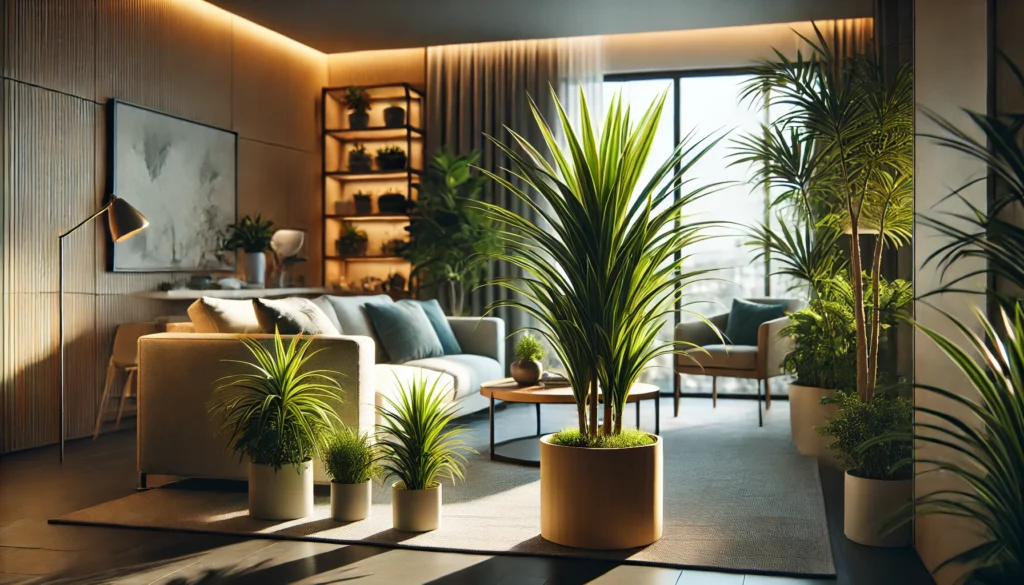
Top Dracaena Varieties for Low Light: Best Options for Indoor Spaces
Are you looking to add some greenery to your home or office, but worried about your space’s low light conditions? You’re in luck! Dracaenas are among the best indoor plants that can thrive in minimal sunlight. In this guide, we’ll explore the top Dracaena varieties for low light that not only bring beauty to your space but also require little maintenance. Whether you’re a seasoned plant lover or a beginner, these resilient varieties will ensure your indoor garden flourishes, even in less-than-ideal lighting. Let’s dive into the best Dracaena options that will thrive in your low-light environment!
Table of Contents
ToggleWhat Makes Dracaenas Perfect for Low Light?
Dracaenas are among the best houseplants for low light conditions, making them ideal for spaces with limited natural sunlight. But what exactly makes them so well-suited for low light environments?
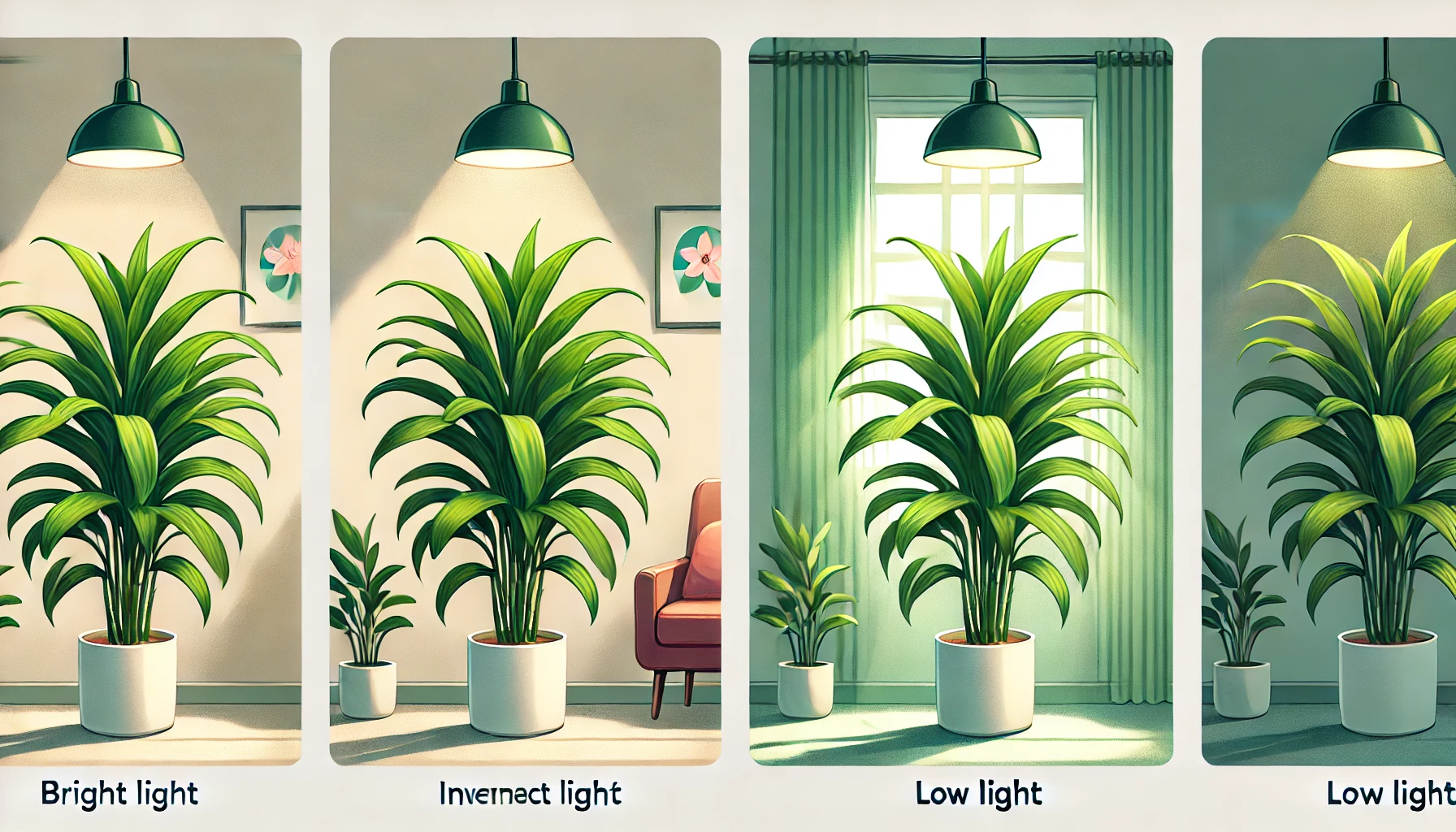
Adaptability to Low Light: Dracaenas have evolved to thrive in indirect or filtered light. Their ability to survive in low-light conditions is due to their ability to efficiently use available light, even when it’s scarce.
Efficient Photosynthesis: Unlike many other plants that require strong sunlight for photosynthesis, Dracaenas can perform this process effectively in dimmer environments. Their large, broad leaves allow them to capture more light, even in low-light spaces.
Slow Growth in Low Light: One benefit of growing Dracaenas in low light is their slower growth. While they won’t grow as quickly as they would in brighter conditions, their growth remains steady and manageable, making them perfect for indoor spaces where maintenance is minimal.
Resilience: Dracaenas are naturally resilient to changes in light, which means they can adapt to various light levels. They won’t immediately show signs of stress in low light, unlike more light-dependent plants.
Key Tips for Low Light Success:
- Placement: Keep your Dracaena near a north or east-facing window, or in a room with indirect light.
- Watering: Be cautious with watering, as plants in low light conditions need less water. Allow the top few inches of soil to dry out before watering.
- Fertilizing: Use a balanced fertilizer during the growing season to support healthy, steady growth, but avoid overfeeding, which can stress the plant.
Top Dracaena Varieties for Low Light
Dracaena plants are known for their striking appearance and ability to thrive in low light conditions, making them a perfect choice for indoor spaces with limited natural sunlight. Here are the top Dracaena varieties that excel in low light environments:
Dracaena Fragrans (Corn Plant)
The Corn Plant is a popular variety known for its tall, glossy leaves and tolerance to low light. It grows slowly but steadily, making it a great addition to dimly lit corners. It can survive with minimal sunlight, though bright, indirect light helps it thrive.

Dracaena Marginata (Dragon Tree)
With its slender, arching leaves, the Dragon Tree is a stylish option for low light settings. It’s particularly resilient to low light conditions and doesn’t require frequent watering, making it a low-maintenance choice for indoor spaces.

Dracaena Compacta
A smaller, bushier variety of Dracaena, the Compacta is perfect for small spaces with limited light. It features dense clusters of dark green leaves and can grow well in low to medium light conditions, adding a touch of greenery without overwhelming the room.

Dracaena Surculosa (Gold Dust Dracaena)
Known for its unique speckled foliage, the Gold Dust Dracaena is a low light tolerant plant that adds a pop of color to any space. It’s ideal for indoor environments with minimal sunlight, as it thrives in indirect light and doesn’t need much attention.
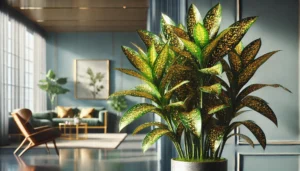
Dracaena Reflexa (Song of India)
This variety features narrow, bright green leaves with yellow edges. It can tolerate low light but does best in bright, indirect light. It’s perfect for creating a tropical vibe in spaces that don’t get direct sunlight.
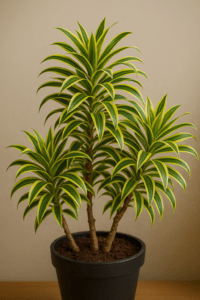
Care Tips for Dracaena in Low Light:
- Watering: Dracaenas prefer to dry out between waterings. Always ensure the soil has dried out before watering again to avoid root rot.
- Temperature: They thrive in temperatures between 65-75°F (18-24°C) and should be protected from drafts and sudden temperature changes.
- Fertilizing: Feed with a balanced fertilizer during the growing season, but cut back during the winter months.
These Dracaena varieties are perfect for brightening up any low light area while requiring minimal care. They offer an easy way to add style and greenery to your home without the need for constant maintenance.
How to Care for Dracaenas in Low Light
Dracaenas are adaptable plants that can thrive in low light, making them ideal for homes or offices with limited sunlight. Here’s how to care for your Dracaena in such conditions:
Light Requirements: While Dracaenas can tolerate low light, they will grow best in bright, indirect light. If your space lacks sunlight, place the plant near a window with filtered light or use grow lights to supplement natural light.
Watering Needs: Dracaenas in low light require less water since the soil dries more slowly. Water the plant when the top 1-2 inches of soil feel dry. Be sure not to overwater, as stagnant moisture can cause root rot.
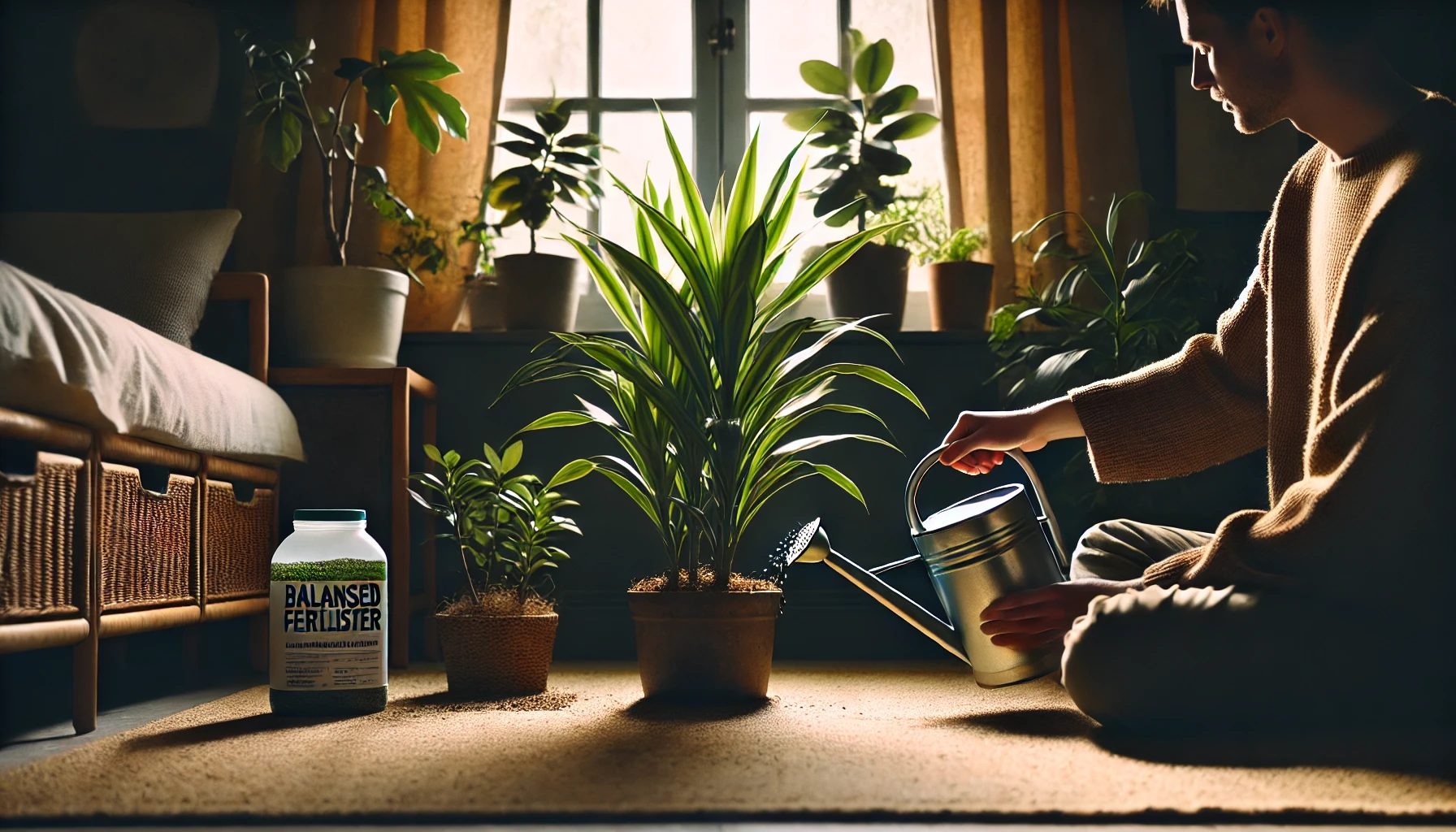
Temperature and Humidity: These plants prefer warm environments between 65-75°F (18-24°C). Dracaenas can tolerate average indoor humidity but may benefit from occasional misting if the air is dry, especially in winter.
Soil and Potting: Use well-draining, lightweight potting mix to avoid water retention. A mix designed for houseplants or a blend of potting soil, perlite, and sand works well. Ensure the pot has drainage holes to prevent excess water buildup.
Fertilizing: Fertilize your Dracaena once a month during the growing season (spring and summer) with a balanced, diluted liquid fertilizer. During fall and winter, reduce feeding as the plant slows down its growth.
Common Issues:
- Yellowing Leaves: This can indicate overwatering, a common mistake in low-light conditions. Ensure proper drainage and allow the soil to dry out before watering.
- Stunted Growth: Inadequate light can lead to slow growth. If your Dracaena isn’t thriving, try relocating it to a brighter spot or adding artificial light.
Common Problems When Growing Dracaenas in Low Light
Dracaenas are popular indoor plants known for their ability to tolerate low light, but they can still face challenges in these conditions. Here are some common problems and practical solutions to help your Dracaena thrive in low light:
Yellowing Leaves One of the most common issues in low light is yellowing leaves. This can occur due to inadequate light or overwatering. Dracaenas in low light may not photosynthesize efficiently, leading to stressed leaves.

Solution:
- Light: While Dracaenas can tolerate low light, they prefer bright, indirect light. Try moving them to a slightly brighter spot, if possible.
- Watering: Ensure the soil dries out between waterings. Overwatering can cause root rot, which leads to yellowing leaves.
Slow Growth In low light, Dracaenas tend to grow slower. This is natural as the plant’s energy production is limited by insufficient light.
Solution:
- Light Adjustment: If possible, place your Dracaena in a brighter location or use artificial grow lights to boost growth.
- Fertilization: Feed with a balanced liquid fertilizer during the growing season to encourage healthier growth.
Leggy Growth Leggy growth, or long, sparse stems with fewer leaves, is another issue when Dracaenas don’t receive enough light. This happens as the plant stretches toward available light.
Solution:
- Increase Light Exposure: Move the plant to a location with brighter, indirect light. If that’s not possible, consider rotating the plant every few weeks to ensure even growth.
- Pruning: Trim back leggy stems to encourage fuller growth.
Brown Leaf Tips Brown tips are a common problem in low light due to inconsistent watering, dry air, or nutrient deficiencies. Dracaenas are sensitive to sudden changes in their environment, and low light can amplify these issues.
Solution:
- Watering: Water when the top inch of soil is dry, ensuring the pot has good drainage.
- Humidity: Dracaenas prefer moderate humidity. Mist the leaves occasionally or use a humidifier in dry environments.
Tips for Creating the Best Low-Light Environment for Dracaenas
Dracaenas are well-known for their ability to thrive in low-light conditions, making them an ideal choice for spaces with limited natural light. To ensure your Dracaena thrives in these settings, follow these expert tips:
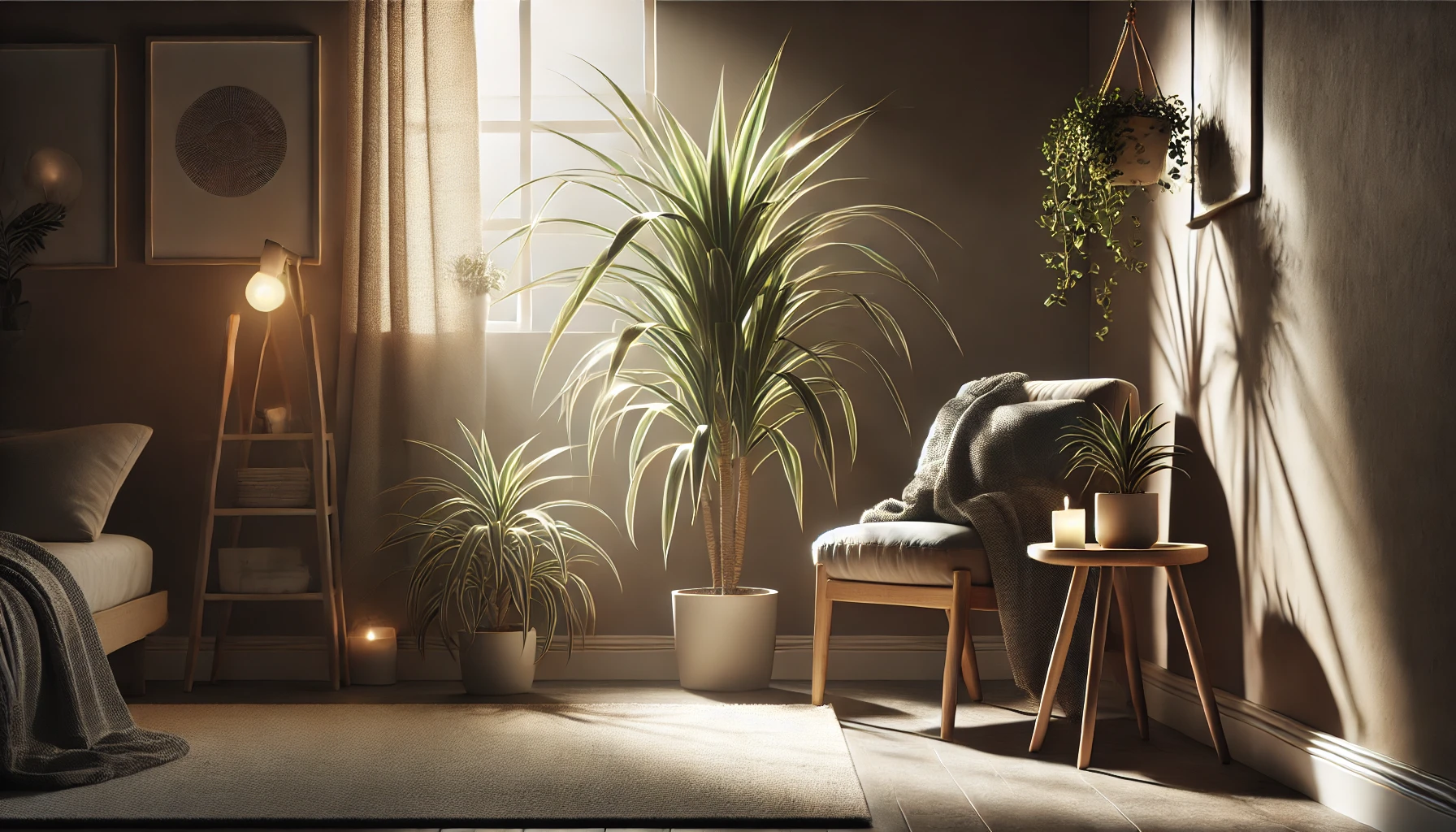
Choose the Right Spot While Dracaenas can tolerate low light, they will grow best in bright, indirect light. Place your plant near a window that doesn’t receive direct sunlight. If your space has very little natural light, consider a location that gets some filtered light during the day.
Avoid Direct Sunlight Direct sunlight can scorch the leaves of your Dracaena, especially in low-light environments. It’s important to keep your plant out of direct sunlight, which can also cause the plant to struggle and lose its vibrant color.
Maintain Consistent Temperature Dracaenas thrive in a stable temperature range of 65-75°F (18-24°C). Avoid placing them near drafts, air conditioning, or heat sources, as fluctuations in temperature can stress the plant.
Watering the Right Way Low light environments often mean slower growth, which translates to less frequent watering. Allow the top inch of soil to dry out before watering. Be sure not to overwater, as the plant’s roots can rot in damp soil, especially in low light.
Consider Artificial Lighting If natural light is very limited, consider supplementing with artificial grow lights. LED or fluorescent lights can help provide the light your Dracaena needs to grow healthily. Place the light about 6-12 inches above the plant for optimal results.
Keep the Leaves Clean Dust can block light from reaching the leaves. Gently wipe the leaves with a damp cloth every couple of weeks to ensure they can absorb the light available.
Fertilize Sparingly Dracaenas in low-light environments don’t require much fertilizing. Apply a balanced, water-soluble fertilizer once every 4-6 weeks during the growing season (spring and summer) to support their growth.
In conclusion, Dracaenas are some of the best plants for low-light environments, making them a perfect choice for indoor spaces that lack abundant sunlight. The top Dracaena varieties for low light, such as the Dracaena Fragrans, Janet Craig, Song of India, Compacta, and Lucky Bamboo, all offer unique beauty and easy maintenance, even in dimly lit rooms. By understanding their light, water, and soil needs, you can create the ideal environment to help your Dracaenas thrive, bringing fresh greenery into your home without the hassle.
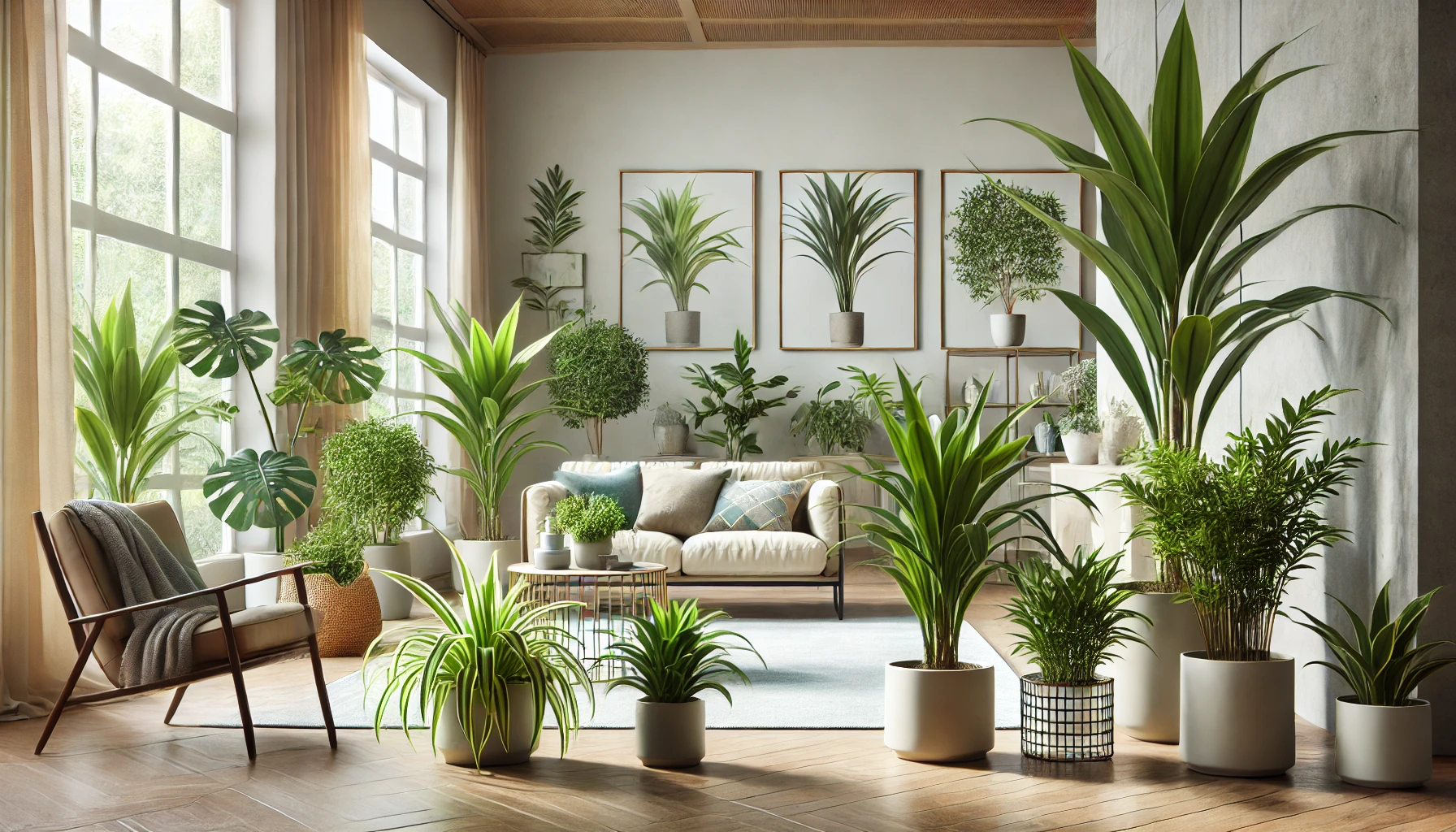
With a little care and attention, these versatile plants will not only brighten up your indoor space but also improve air quality and add a touch of nature to your everyday surroundings. So, go ahead and choose the perfect Dracaena variety for your home, and enjoy the beauty and benefits of having these resilient plants as part of your indoor garden. Happy planting!
Frequently Asked Questions(FAQ)
What are the best Dracaena varieties for low light?
The top Dracaena varieties for low light include Dracaena Fragrans (Corn Plant), Dracaena Deremensis (Janet Craig), Dracaena Reflexa (Song of India), Dracaena Compacta, and Dracaena Sanderiana (Lucky Bamboo). These varieties are well-suited for indoor spaces with minimal sunlight and are known for their low-maintenance care requirements.
How much light do Dracaenas need to thrive?
Dracaenas prefer bright, indirect light but can also thrive in low-light conditions. They are adaptable and can tolerate areas with minimal sunlight, though they may grow more slowly. Avoid placing them in direct sunlight, as it can scorch their leaves.
Can Dracaenas survive in a windowless room?
While Dracaenas can survive in low-light conditions, they may struggle in a completely windowless room. If sunlight is very limited, you may want to consider using grow lights to supplement the light they receive.
How do I care for Dracaenas in low light?
To care for Dracaenas in low light, ensure they receive indirect light, water them only when the top inch of soil is dry, and use well-draining soil to avoid root rot. They also prefer moderate humidity and should be kept in temperatures between 60-75°F (16-24°C).
How do I know if my Dracaena isn’t getting enough light?
Signs that your Dracaena may not be getting enough light include leggy growth, pale or yellowing leaves, and slow or stunted growth. If you notice these symptoms, try moving the plant to a brighter spot or supplementing its light with a grow light.
Do Dracaenas need a lot of water in low light?
Dracaenas in low light need less water because they grow slower in these conditions. Water them only when the top of the soil is dry, and make sure the pot has good drainage to prevent overwatering, which can lead to root rot.
Can Dracaenas adapt to artificial light?
Yes, Dracaenas can adapt to artificial light. If natural light is insufficient, using a grow light for 12-16 hours a day can help provide the necessary light for healthy growth. Be sure to place the grow light 6-12 inches above the plant to mimic natural light conditions.
How often should I fertilize Dracaenas in low light?
Fertilize Dracaenas in low light sparingly. During the growing season (spring and summer), use a balanced, diluted fertilizer once every 4-6 weeks. Avoid fertilizing in winter when the plant is dormant.
Are Dracaenas safe for pets?
Some Dracaena varieties, such as Dracaena Fragrans and Dracaena Deremensis, are toxic to pets, particularly cats and dogs. Keep your Dracaena plants out of reach of pets or opt for non-toxic plants if you have animals in your home.
Can I grow Dracaenas in low light without a window?
Growing Dracaenas in a windowless room is possible with the use of artificial lighting, such as grow lights. However, if there’s absolutely no light, it’s recommended to rotate your Dracaena plants to a location with indirect sunlight occasionally to ensure healthy growth.
